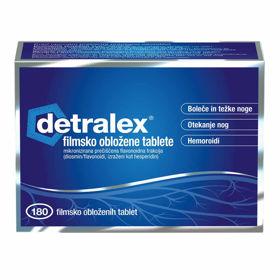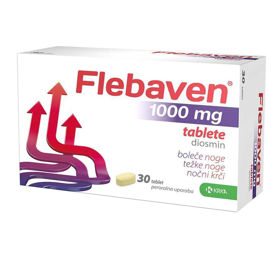Customer question:
I am interested in how diosmin works, which is found in some medicines in our country, for example Detralex or Flebaven?
anonymous customer.
Answer:
People suffering from vein-related diseases (venous insufficiency and varicose veins) often take medicines and dietary supplements with the addition of the active ingredient diosmin to relieve symptoms. But as with any medicine, you should consult your personal doctor or pharmacist before taking it.
If you have varicose veins, you are often subjected to therapy to reduce pain and swelling in the leg area, and in pharmacies, in addition to analgesics, in case of inflamed problems, they most likely issue a medicine containing the active ingredient diosmin. Medicines with diosmin are often advertised as effective medicines for vein disease.
What is diosmin and how does it work?
Diosmin, available over the counter as an OTC drug (Deralex, Flebaven), is a flavonoid derived from citrus fruits. Flavonoids are a class of antioxidants that are thought to reduce inflammation and promote more efficient blood flow in blood vessels. Diosmin is usually combined with another flavonoid substance - hesperidin - and is sold under different trade names (Detralex, Flebaven, Diovenor, Daflon, Barosmin, citrus flavonoids, Flebosten, Litosmil, Venosmine...).
If studies also support the use of diosmin in the treatment of varicose veins, you should at least consult a doctor, and even better a vascular specialist, to determine whether therapy with Detralex or Flebaven is suitable for you.
A 2013* study published in Phlebology: Journal of Venous Disease concluded that diosmin, in close association with the effects of hesperidin, reduced the symptoms of chronic venous disease in 127 conditions studied. Similarly, a 2017 study** published in the same medical journal confirmed earlier reports that flavonoid-derived compounds are health-promoting and thus an excellent supportive therapy for venous ulcers, while also containing the swelling that causes chronic venous disease.<; /p>;
Reference:
* https://journals.sagepub.com/doi/10.1177/0268355513489550
** https://pubmed.ncbi.nlm.nih.gov/28211296/












